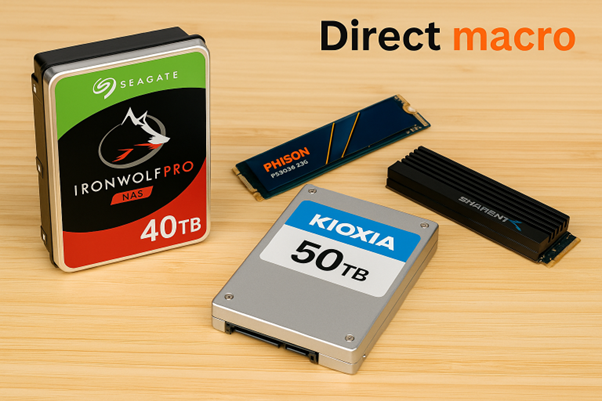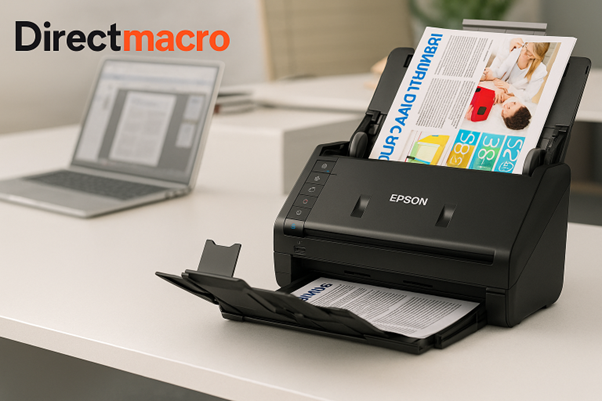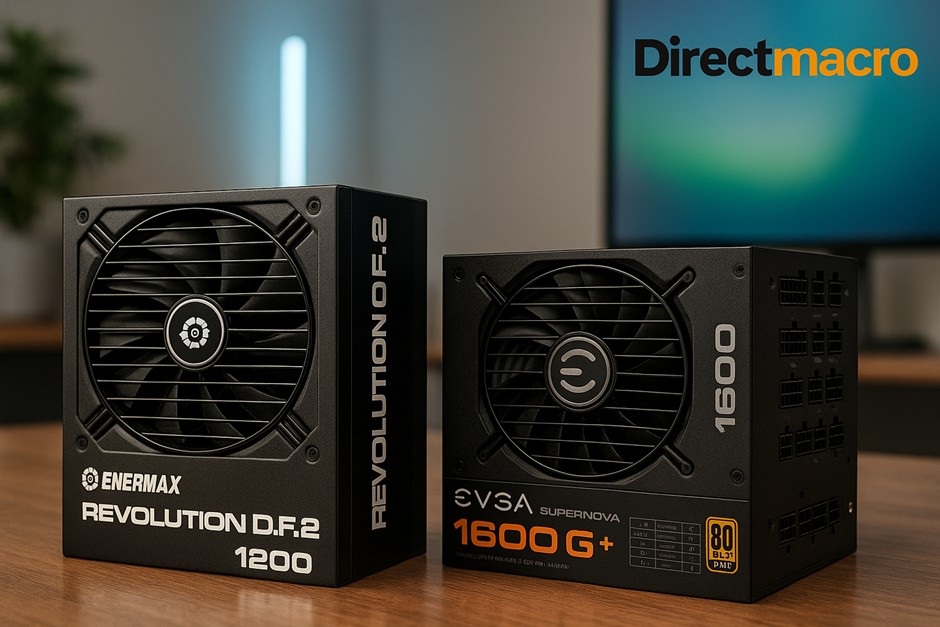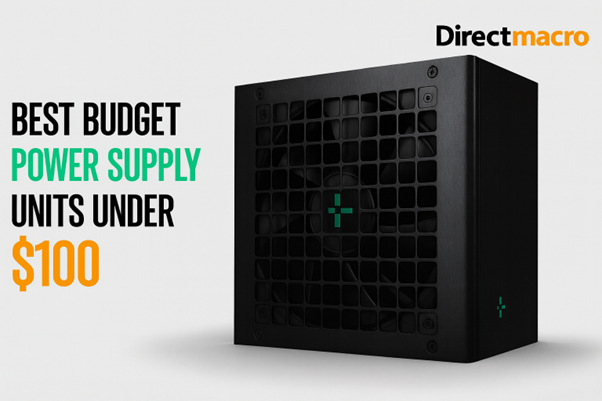Largest Hard Drives & SSDs Guide to 30TB Options
Data is expanding at an exponential rate. The global data sphere is expected to reach a staggering 181 zettabytes, a figure that is impossible to comprehend. This explosion of information, ranging from high-resolution video and AI-generated content to massive game libraries and enterprise databases, has created an insatiable demand for storage. If you have ever seen your storage bar become red, struggled with frustratingly slow file transfers, or found yourself deleting old projects to make room for new ones, you will understand this anguish.
This year’s Consumer Electronics Show (CES) 2025 offered a glimpse into the future of storage, showcasing breakthrough solutions that promise to ease similar difficulties. We saw incredible advances in speed and capacity, as manufacturers pushed the boundaries of what was previously thought possible. This comprehensive guide is the result of hours of research and the most recent information to help you navigate this new environment. We will look into the largest hard drive options available, from cutting-edge consumer SSDs to enterprise-grade SSDs, and provide the knowledge you need to make an informed decision.
Whether you are a content developer, gamer, business owner, or home user looking to future-proof your system, this article will show you the largest hard disk sizes and SSDs available right now.
Top 5 Largest Storage Drives at a Glance: Quick Comparison Table
| Drive Name | Type (HDD/SSD/External) | Capacity | Price Range | Price per TB | Max Speed | Best For | Availability |
| Solidigm D5-P5336 | SSD (Enterprise) | 122 TB | $8,000+ | ~$65 | 7 GB/s | Data centers, AI/ML | Enterprise/OEM |
| Seagate Expansion | HDD (External) | 28 TB | $300 – $400 | ~$12-14 | ~270 MB/s | Home/office backups | Consumer Retail |
| Glyph Blackbox Plus | SSD (External) | 30.72 TB | ~$5,000 | ~$163 | 1 GB/s | Pro video/media | Pro Retail |
| CORSAIR EX400U USB4 | SSD (External) | 4 TB | $400 – $500 | ~$100+ | 4 GB/s | Gamers, creators | Consumer Retail |
| Crucial P510 | SSD (Internal) | 4 TB | $250 – $350 | ~$62-87 | 11 GB/s | PC/Console Gaming | Consumer Retail |
Note: Pricing and availability are estimates based on current market trends and may vary.
CES 2025 Storage Breakthroughs: What’s New and Game-Changing
CES 2025 was more than just new TVs and smart home devices; it was a watershed moment for the storage industry, showcasing new technologies that will transform how things work and how much they can keep.
1. Revolutionary Speed Advances
The drive for quicker storage has reached a new height, and the most recent controllers are at the heart of this revolution.
- Phison PS5028-E28 Controller (14.5GB/S PCie Gen5)
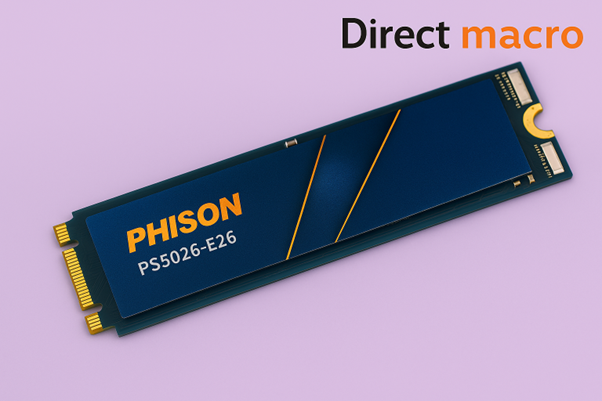
This new controller is designed to extract every last bit of performance from the PCIe Gen5 interface, delivering sequential speeds that outperform last year’s top performers. For content makers and gamers, this signifies the end of bottlenecks and the start of a new era of responsiveness.
- Specifications
A 6nm process, triple-core architecture, and support for the newest Kioxia BiCS8 NAND storage enable claimed read and write rates of 14.9 and 14 GB/s, respectively.
- Reasons to Buy
Superior sequential performance for big file transfers, significant improvement in random I/O performance, and improved power economy for laptops and tiny form factor PCs.
- Reasons To Avoid
It requires a suitable PCIe 5.0 motherboard, which is not currently widely available, and the initial cost will be high.
2. Next-Gen External Storage
External drives are no longer just for backups; they are becoming high-performance mobile workstations.
- CORSAIR EX400U USB4 External SSD Deep Dive
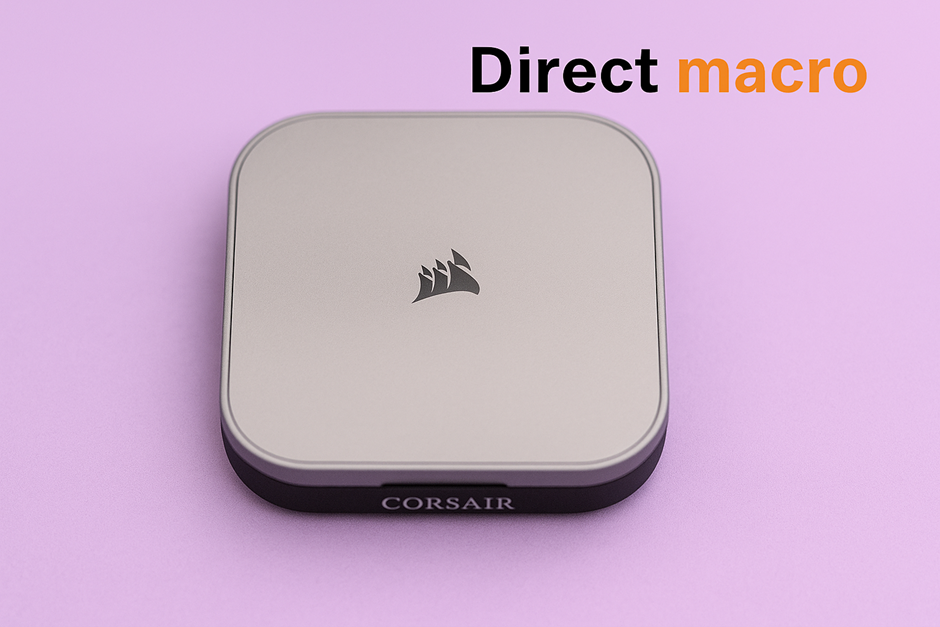
This portable SSD is intended to take use of the massive bandwidth of USB4 and Thunderbolt 4, attaining speeds previously only available on internal devices.
- Specifications
Up to 4,000 MB/s sequential read and 3,700 MB/s write rates, a rugged construction, and MagSafe compatibility.
- Reasons to Buy
It combines exceptional mobility with unrivaled performance, making it ideal for editing high-resolution video on the fly.
- Reasons To Avoid
The plastic build quality may feel less premium, and sustained write rates may suffer if the cache is filled during particularly big file transfers.
- SanDisk Creator Series Innovations
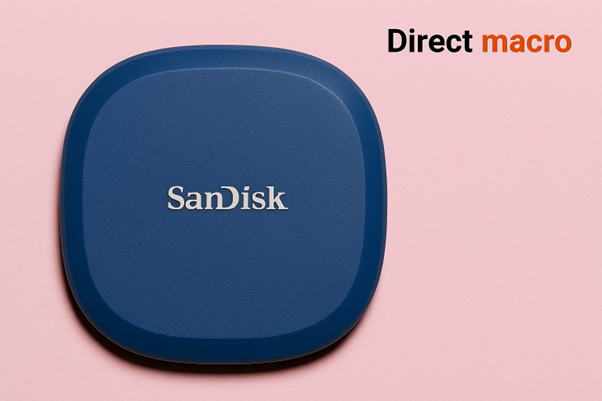
SanDisk’s Creator Series is a collection of products designed specifically for the modern creative professional, providing a balance of speed, durability, and simplicity.
- Specifications
The Creator Phone SSD (up to 2TB, 1000MB/s), Creator Pro Portable SSD (up to 4TB, 2000MB/s), and Creator Desk Drive (up to 8TB) are all ruggedly designed.
- Reasons for Buying
Designed primarily for content producer processes, including features such as a MagSafe adapter for iPhone video recording and ruggedized enclosures for field use.
- Reasons to Avoid
The maximum capacity of the portable alternatives may be insufficient for certain users with massive libraries.
- OWC Thunder Blade X12 Thunderbolt 5 Technology
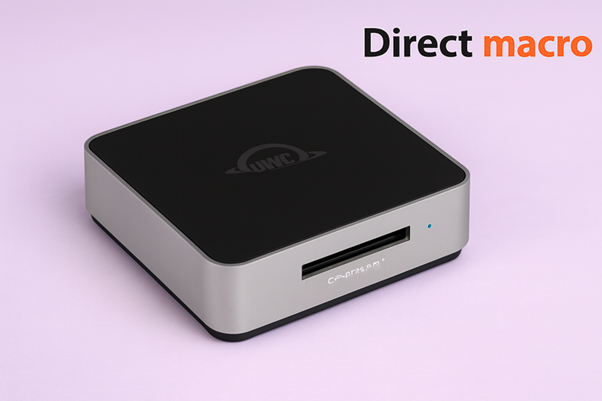
The Thunder Blade X12 is a professional-grade RAID solution built for the most demanding video production workflows.
- Specifications
A RAID array of 12 NVMe SSDs, delivering peak speeds up to 6,600 MB/s and capacities up to 96 TB.
- Reasons to Buy
Unrivaled speed and capacity for multi-camera 8K RAW editing, with RAID 5 redundancy for data protection.
- Reasons to Avoid
A premium product with a price tag to match, intended for professional studios, not the average consumer.
Biggest Internal Hard Drives: Desktop Powerhouses for Maximum Storage
The traditional hard disk drive (HDD) is unparalleled in terms of raw, cost-effective capacity. For consumers who want the biggest hard disk possible, these internal behemoths are the only alternative. They are the foundation of data centers and home NAS systems that provide amazing storage capacity at a fraction of the cost per terabyte of an SSD.
1. Consumer Desktop Champions (20TB-28TB)
The consumer sector has witnessed a continuous march toward greater capacity, with 28TB currently setting the standard for the greatest home storage option. These drives achieve a mix between huge storage capacity and performance optimized for ordinary desktop use.
- Seagate IronWolf Pro 24TB Detailed Analysis
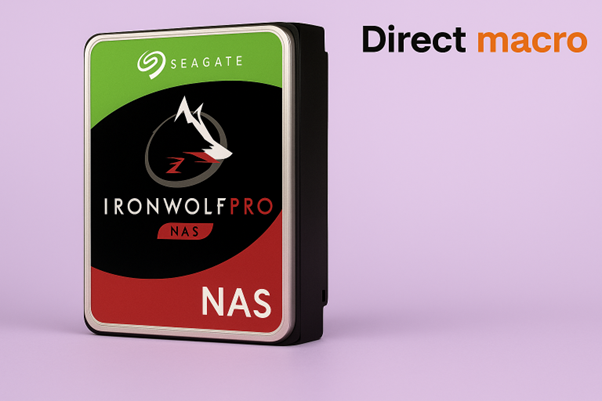
This Seagate Iron Wolf Pro drive is a top-tier performer. It is designed to optimize network-attached storage (NAS) and other multi-drive environments. It is the largest hard drive in its class, designed for continuous operation and high workload rates.
- Specifications
7,200 RPM, SATA 6 Gb/s interface, 512 MB cache, and a workload rate limit of 550 TB per year.
- Reasons to Buy
High sustained transfer rates, improved dependability for NAS settings, and a complete 5-year guarantee with 3-year data recovery services.
- Reasons To Avoid
Louder than other rivals, and the premium price may not be a good value for desktops with only one drive.
- WD Red Pro 24TB NAS Optimization
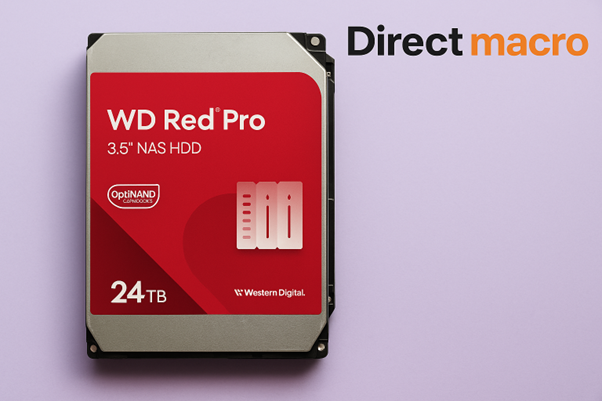
Western Digital’s Red Pro series is the go-to for many NAS enthusiasts, offering a blend of performance and reliability. The 24 TB model is a workhorse, built to flourish in a multi-bay enclosure.
- Specifications
7,200 RPM, SATA 6 Gb/s, intended for 24-hour operation and multi-user scenarios.
- Reasons for Buying
Designed specifically for NAS, with built-in RAID optimization, lower power consumption than other enterprise competitors, and a strong reputation for long-term stability.
- Reasons To Avoid
The maximum capacity is slightly smaller than that of the most recent Seagate models, and the performance is optimized for mixed use rather than pure speed.
- Seagate Exos X18 18TB Enterprise Reliability
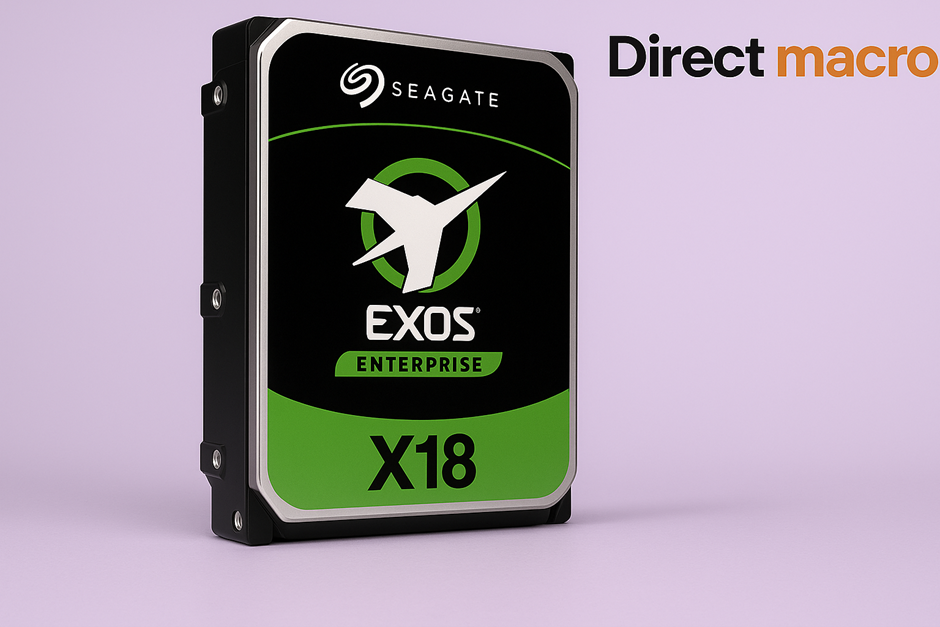
The Exos series is Seagate’s enterprise-grade range, and the X18 is the apex of that technology. While developed for data centers, it is also available to power users looking for the highest level of dependability.
- Specifications
7,200 RPM, SATA 6 Gb/s, 512 MB cache, and an impressive 2.5 million hours MTBF (Mean Time Between Failure).
- Reasons To Buy
Unrivaled dependability and a guarantee designed for corporate usage, with features like Power Balance that maximize energy economy in server racks.
- Reasons To Avoid
It might be loud, and the enterprise-level functionality and pricing are excessive for a typical desktop or single-drive arrangement.
2. Enterprise Internal Giants (30TB+)
For the ultimate in storage density, the enterprise market is where you’ll find the largest hard drive in the world. These drives are not typically sold to consumers but are the foundation of cloud storage and big data.
- WD Ultrastar DC HC680/690 series (28TB-32TB)
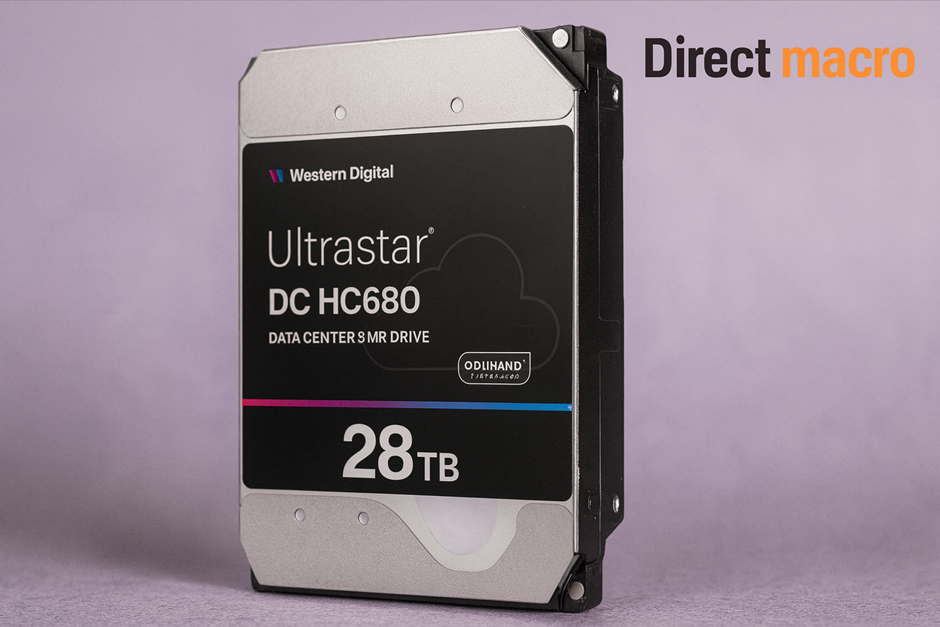
Western Digital’s Ultrastar series is the workhorse of the enterprise world. These drives are intended for hyperscale data centers, and their capacity exceeds the limits of standard platter technology.
- Specifications
Helio Seal technology reduces power consumption, increases longevity, and offers numerous interface options (SATA or SAS).
- Reasons for Buying
Unrivaled density and dependability for large-scale installations, with an emphasis on long-term cost of ownership.
- Reasons To Avoid
They are not available through typical consumer channels and are rather pricey per unit.
- Toshiba N300 Series Upcoming Models
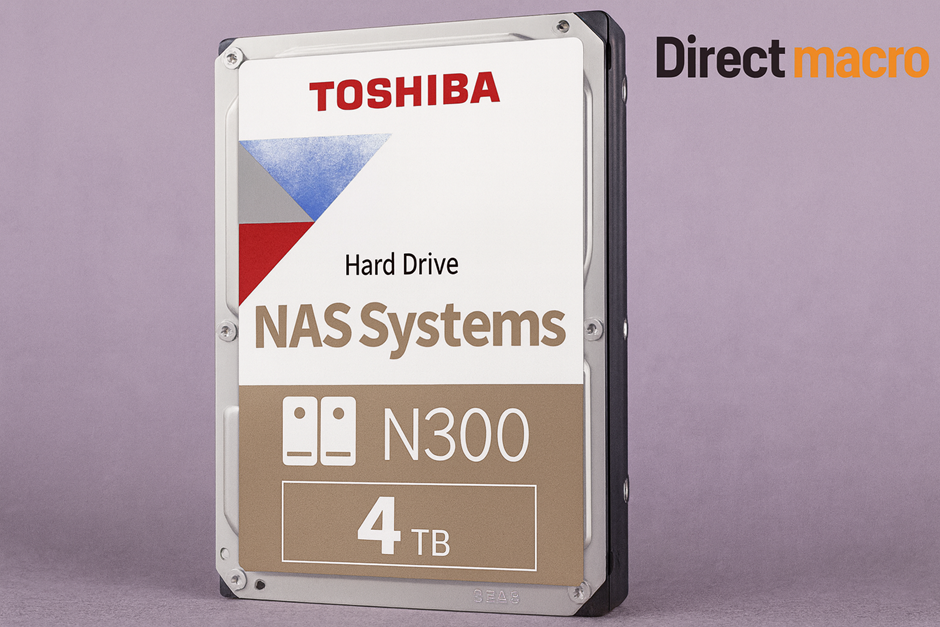
Toshiba has been a key player in the NAS and enterprise space, and their upcoming Toshiba N300 NAS models are set to challenge the current capacity leaders.
- Specifications
Although official specifics are scarce, they are likely to improve helium-filled designs and sustained data rates.
- Reasons to Buy
Given Toshiba’s great reputation for quality, a new generation of SSDs is expected to provide improved efficiency and performance.
- Reasons to Avoid
The newest models may not be readily accessible, and the initial cost may be exorbitant.
Best Large Capacity External Drives: Portable and Desktop Solutions
External drives provide the convenience of portable storage or a simple plug-and-play option for your desktop. The market for massive external storage presently consists of two technologies, such as the classic, high-capacity HDD and the new, lightning-fast external SSD.
1. Revolutionary External SSDs (CES 2025 Focus)
The new breed of external SSDs is redefining professional workflows, offering speed and portability in a single, compact package.
- SanDisk Extreme PRO Dual Drive Dual Connectivity
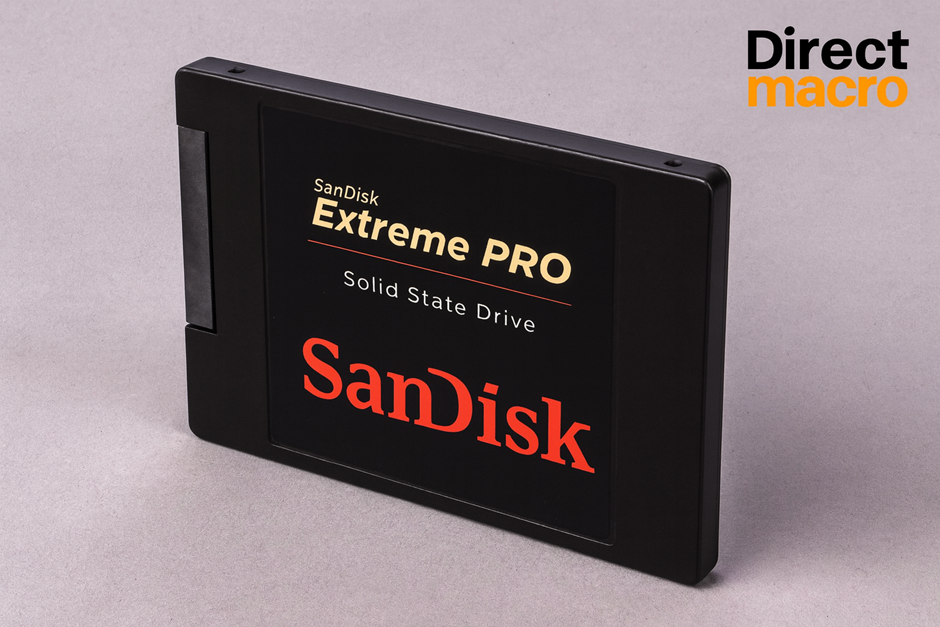
This innovative SanDisk Extreme PRO Dual Drive dual connectivity caters to users who need to bridge the gap between different devices, offering both USB-C and USB-A connectors.
- Specifications
USB 3.2 Gen 2 interface, up to 1000 MB/s read and 900 MB/s write speeds, and a durable form factor.
- Reasons to Buy
The dual connectivity is incredibly convenient for cross-platform use, and the rugged design is great for photographers and videographers in the field.
- Reasons to Avoid
Not as fast as the latest USB4/Thunderbolt options and has a more limited capacity.
2. Traditional Portable Drives (Up to 6 TB)
While portable SSDs get the spotlight for speed, traditional portable HDDs still offer the best value for mobile mass storage.
- WD My Passport 6TB Comprehensive Test

The WD My Passport remains a popular choice for its balance of size, capacity, and reliability. The 6TB version provides ample space in a pocketable form factor.
- Specifications
It includes USB 3.0, automated backup software, and hardware encryption for password protection.
- Reasons for Buying
Excellent value per gigabyte for portable storage, with a small design and a variety of colors.
- Reasons To Avoid
Much slower than any SSD, it is best suited for backups rather than high-speed file editing.
- Seagate Backup Plus Hub 8TB (Desktop Portable)
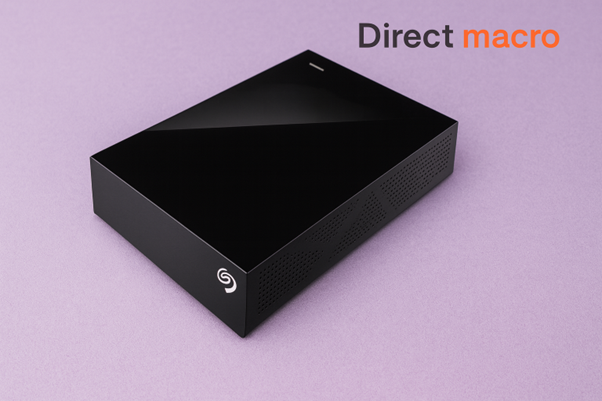
The Seagate Backup Plus Hub is a desktop-class external drive that offers a unique feature: a built-in USB hub.
- Specifications
It includes 8 TB of storage, a USB 3.0 interface, and a front-facing USB hub for charging and connecting other devices.
- Reasons to Buy
The integrated hub saves space, and the pricing per TB makes it ideal for home backups.
- Reasons To Avoid
Requires a power adapter, making it less portable than the My Passport, and HDD speeds remain limited.
3. Desktop External Powerhouses (Up to 24TB)
Desktop external hard drives provide the most storage space in a user-friendly form for individuals who need to store their complete digital life. It is where you will discover the largest hard drive available for household usage.
- Seagate Expansion Desktop 24TB Value Analysis
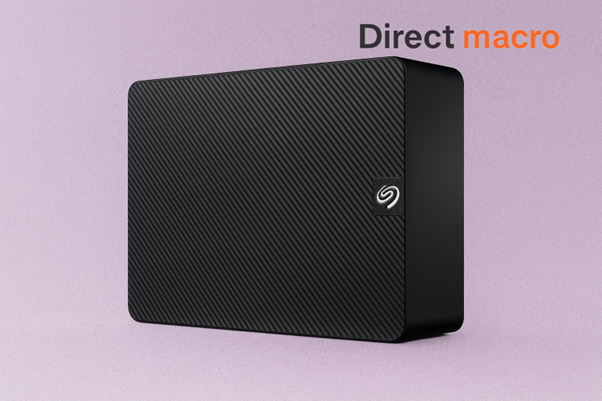
The Seagate Expansion Desktop is often the answer when someone asks, “What is the largest hard drive you can buy?” This drive provides a massive amount of storage at a very compelling price point.
- Specifications
It includes a 24 TB capacity, USB 3.0 connectivity, and drag-and-drop file saving.
- Reasons to Buy
It is the best pricing per TB for a single-drive external solution, making it excellent for backing up large photo, video, and music libraries.
- Reasons to Avoid
Slower than internal HDDs, requires a power adapter, and the basic case provides little protection.
- WD Elements Desktop Series
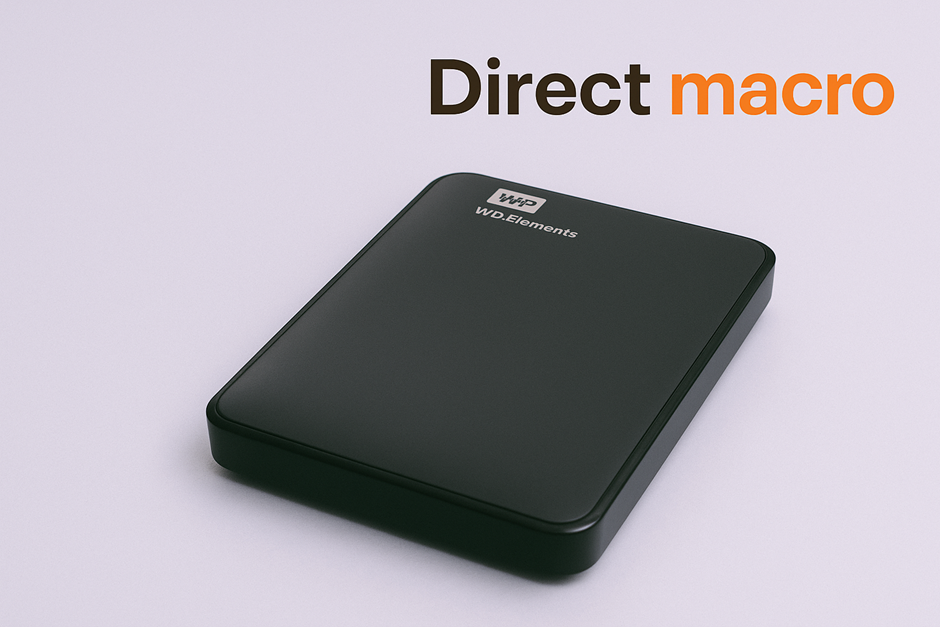
The WD Elements Desktop series is another popular line for affordable, high-capacity external storage. It competes directly with the Seagate Expansion, offering similar capacities and value.
- Specifications
USB 3.0 interface, up to 24TB capacity, simple and uncomplicated design.
- Reasons to Buy
Excellent bargain for large-scale backups and media storage, with a strong reputation for dependability.
- Reasons To Avoid
There is no associated software, and the plastic case seems cheap.
Biggest SSDs Available: From Gaming Rigs to Data Centers
While HDDs dominate the capacity wars at the very top, SSDs are quickly catching up in the consumer and professional space, offering a performance advantage that is undeniable. They are the go-to for speed-critical applications, and new technologies are pushing their capacity limits higher than ever.
1. Next-Gen Consumer SSDs (2TB-8TB)
The consumer SSD industry is very competitive for both speed and capacity, with 8TB presently serving as the high-end standard for PC and console games.
- Samsung 990 Pro 8TB (Expected Launch)
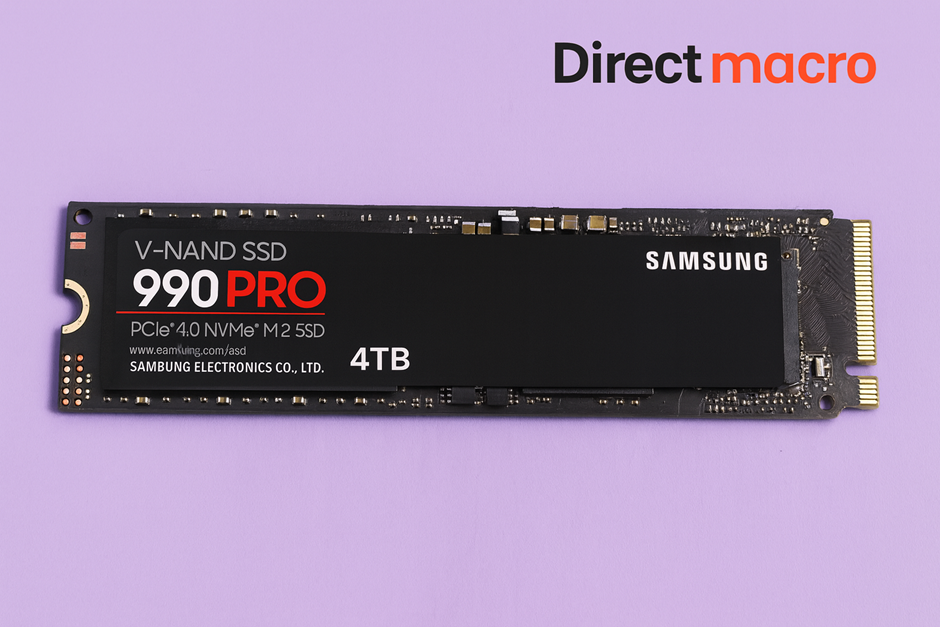
Samsung’s Pro series has always been the benchmark for consumer performance, and the anticipated 8TB version of the 990 Pro will be a significant milestone.
- Specifications
PCIe 5.0 interface, sequential read rates of up to 14,800 MB/s, and a redesigned controller for improved power efficiency.
- Reasons to Buy
Lightning-fast speeds that significantly cut game load times and application launches, ideal for high-end gaming systems and workstations.
- Reasons To Avoid
Will have a large price premium, and existing hardware may limit performance.
- Crucial P510 Series Analysis
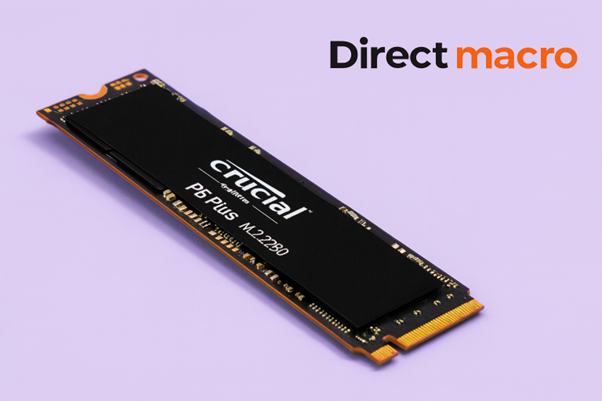
The Crucial P510 aims to bring next-gen PCIe 5.0 performance to a more accessible price point.
- Specifications
PCIe 5.0 interface, up to 11,000 MB/s read speeds, and a DRAM-less design for cost savings.
- Reasons to Buy
A great entry point to PCIe 5.0 speeds without the top-tier price tag, and its low power consumption results in impressive thermal efficiency.
- Reasons to Avoid
Sustained write performance can throttle on large file transfers, and it’s not the fastest PCIe 5.0 drive on the market.
- WD_BLACK SN850P 4TB Gaming Focus
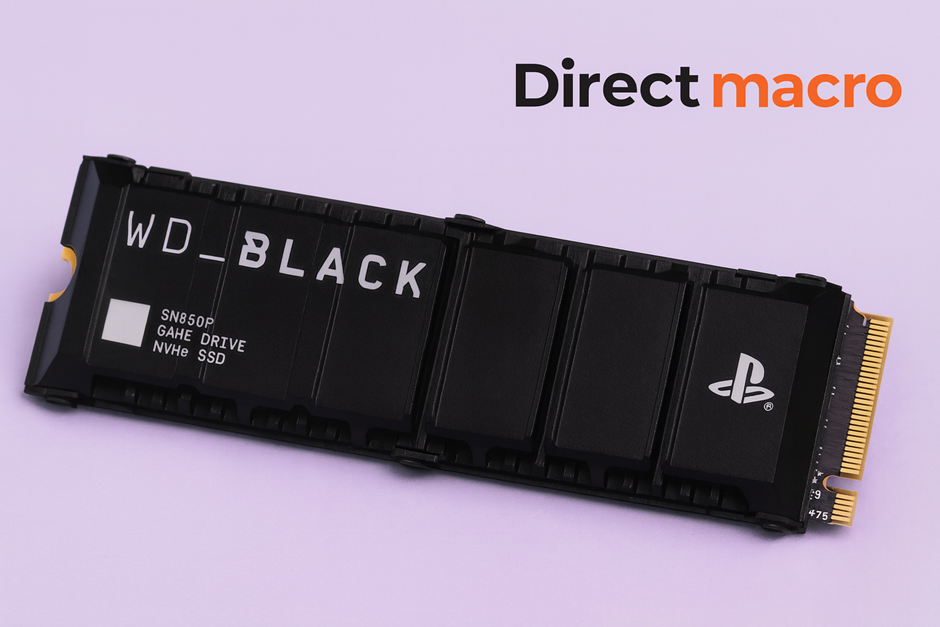
WD_BLACK SN850P 4TB has built a reputation for high-performance gaming drives. Let’s find out the specifications and reasons to buy and avoid this amazing product.
- Specifications
A gaming-optimized PCIe 4.0 drive with a strong heatsink.
- Reasons to Buy
Exceptional gaming performance with a vast capacity to carry hundreds of games, and the heatsink maintains consistent performance over lengthy sessions.
- Reasons To Avoid
It is still a PCIe 4.0 drive; hence, it cannot compete with Gen5 drives in terms of sheer sequential speed.
2. Enterprise SSD Giants (60TB-122TB)
The actual storage titans live in the corporate sector. These drives represent the absolute pinnacle of storage density and speed, which is why the largest hard drive size or capacity for a complete server rack is currently measured in petabytes (PB).
- Solidigm D5-P5336 122TB Technical Deep Dive
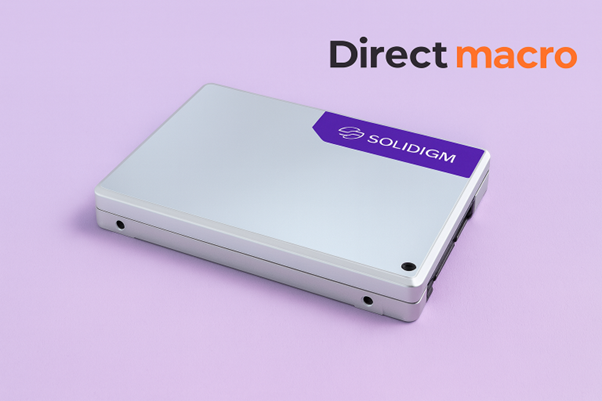
The Solidigm D5-P5336 122 TB holds the title for the largest SSD in the world. This drive is built for data centers that require massive, dense storage for read-intensive workloads.
- Specifications
Uses QLC NAND technology to achieve its massive capacity, with a U.2 interface and a focus on cost-effective, high-density storage.
- Reasons to Buy
The highest single-drive capacity on the market, drastically reducing the physical footprint and power consumption of a data center.
- Reasons to Avoid
Not a consumer product, with a price tag and interface that are incompatible with home systems.
- Kioxia LC9: Upcoming 245TB Monster
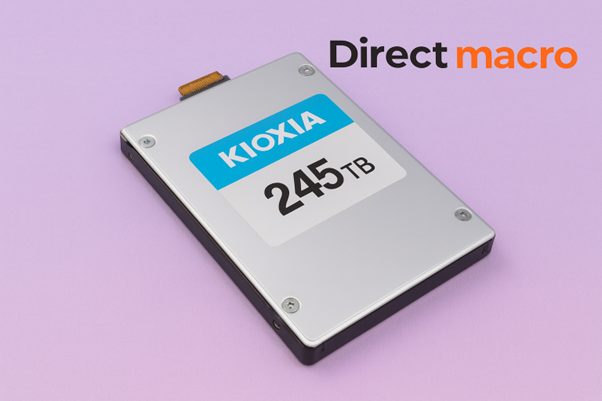
Kioxia is pushing the envelope even farther with its forthcoming LC9 series. The Kioxia LC9 245.76 TB drive provides a look into a future in which single SSDs can replace large arrays of HDDs.
- Specifications
It includes a gigantic 245.76 TB capacity in an E3.L form factor, PCIe 5.0, and the latest generation of BiCS FLASH QLC memory.
- Reasons for Buying
The highest storage density for hyperscale cloud systems.
- Reasons To Avoid
A technological display that is currently under development and will not be released to customers.
Comprehensive Buying Guide—How to Choose the Perfect Large Capacity Drive for Your Needs?
Choosing the ideal large-capacity drive is more than simply choosing the largest hard disk; it is also about matching the proper technology to your individual requirements.
1.Capacity Planning Made Simple
Begin by calculating your existing and future storage requirements. Use a simple data calculator to determine how much space you require. Do not forget to account for future growth, such as an upgrade to 8K video editing or a larger game collection. Always prepare for backups; the 3-2-1 rule (3 copies on two separate media types, one offsite) is the gold standard.
2.Performance vs Capacity Trade-offs
It is the primary difficulty. For raw, inexpensive capacity, an HDD is the clear victor. For speed, an SSD is required. Determine what your key use case is. Do you edit 8K videos? Go with a high-speed external SSD. Are you archiving a large photo library? An internal or external HDD has a lower price per terabyte.
3.Budget Optimization Strategies
Analyze the price per TB in various categories. HDDs have the lowest cost, making them the most economical option for mass storage. SSDs are more costly, but they deliver unrivaled performance. The “sweet spot” is frequently a hybrid configuration: a fast 2-4TB SSD for your operating system and current work and a big hard drive (24TB+) for archiving and backups.
4.Reliability and Warranty Factors
Always verify the MTBF (Mean Time Between Failures) rating for drives, particularly HDDs. Look for drives with extensive warranties and data recovery services for added peace of mind.
Best Large Storage Drives by Professional Need—Specific Use case Recommendations
The best and largest hard drive for you depends entirely on what you do. Here are our top recommendations for different professional needs.
1. Content Creators and Video Editors
A high-speed external SSD transforms 4K/8K video editing. The CORSAIR EX400U USB4 SSD is ideal for uncompressed, portable footage. For your primary archive, an internal Seagate Iron Wolf Pro 28TB in a multi-bay NAS is the best option for centralizing footage and ensuring redundancy.
2. Gamers and Streamers
A large SSD is essential for modern games, which can reach over 100 GB in size. The Samsung 990 Pro 8TB (when it becomes available) will provide the greatest reduction in load time. An internal WD_BLACK SN850P 8TB drive is an excellent choice for storing your entire game library.
3. Photographers and Digital Artists
RAW files can consume a lot of space. A portable drive, such as the WD My Passport 6TB, is ideal for fieldwork, but a desktop external drive, such as the Seagate Expansion Desktop 24TB, is the most cost-effective option for a permanent photo archive.
4. Business and Enterprise Users
The Solidigm D5-P5336 122TB is the most efficient data center storage solution for mission-critical data. A multi-bay NAS with Seagate Exos X28 28TB disks in RAID configuration offers the ideal combination of capacity, dependability, and security for small organizations.
Setting Up Your Large Capacity Drive: Step-By-Step Installation and Setup Guide
After you have picked your drive, appropriate installation and configuration are critical for peak performance.
1. Internal Drive Installation
- SATA and Power Connection
Ensure that your motherboard includes SATA and power ports. Connect the SATA data cable from the drive to the motherboard as well as the power connection from the power supply unit to the drive. - BIOS/UEFI Configuration
Restart your computer and enter the BIOS. Ensure that the drive is identified and configured correctly. - Formatting
To format the drive with your favorite file system, use the Disk Management program in Windows or Disk Utility in macOS (NTFS for Windows, APFS for macOS).
2. External Drive Setup
- First-Time Connection
Simply plug the drive into a free USB or Thunderbolt port. Windows and macOS should automatically recognize the new drive. - Format Recommendations
While most external drives come pre-formatted, you may want to reformat them for your specific operating system, such as ExFAT for cross-platform compatibility. - Optimization Settings
Check the drive’s manufacturer website for any software or drivers that can optimize performance or add extra features.
3. Advanced Configuration
Consider a RAID configuration for data redundancy or increased performance if you have numerous drives. For sensitive data, consider using built-in encryption capabilities or third-party applications. To avoid data loss, always set your backup program to automatically back up your most essential files.
Tips For Maximizing Your Large Drive Performance and Lifespan
Getting the largest hard drive is only the first step. To ensure it performs at its best and lasts for years, you need to maintain it.
1. Performance Optimization
- File System
NTFS (Windows) and APFS (macOS) are modern file systems that provide superior performance and data integrity over earlier formats.
- HDD Maintenance
Use a defragmentation tool on a regular basis to optimize file placement and read/write speeds.
- SSD Maintenance
Use TRIM commands (which are usually automated by the OS) to maintain optimal performance by cleaning up deleted data blocks.
2. Health Monitoring and Maintenance
Use SMART (Self-Monitoring, Analysis, and Reporting Technology) data to assess the health of your disk. Temperature monitoring is especially important for high-performance SSDs and densely packed HDD arrays.
3. Future of Large Storage
The future of storage is exciting. Technologies such as QLC NAND, which allows for greater density, and even experimental DNA storage, which can store massive amounts of data in a small space, promise to increase capacities even further. Interfaces like PCIe 6.0 and next-generation Thunderbolt will eliminate current constraints, allowing for unprecedented speeds. The emphasis will be not just on capacity and speed but also on sustainability, with manufacturers seeking more energy-efficient and ecologically friendly solutions.
Conclusion – Final Buying Advice
The hunt for the largest hard disk involves balancing capacity, speed, and cost. This year’s landscape is broader than ever, with fantastic options for all types of users.
The key to a successful purchase is to define your major use case and then select a drive that meets your budget and performance needs. Do not make the error of paying too much for speed you do not need or underbuying a drive that will be full in a year. The largest hard disk capacity is constantly changing, but with this information, you will be ready to future-proof your storage for years to come.
For more information and details, please call us at (855) 483-7810 or visit our Contact page for bulk orders. Our professional team is available 24/7 to assist you.
Frequently Asked Questions
Q1. What’s the largest consumer hard drive available in 2025?
The Seagate Expansion Desktop 28TB is currently the largest hard drive readily available for consumers, offering a massive amount of storage at a great value.
Q2. Are 28TB+ drives reliable for everyday use?
Yes, modern 28 TB+ drives like the Seagate IronWolf Pro and WD Red Pro are built for 24/7 operation and are extremely reliable, especially when used in a NAS with RAID.
Q3. How do I back up extremely large drives?
A multi-drive RAID array (like a NAS) is a great solution for backing up huge drives. Alternatively, a combination of an external HDD and a cloud storage service provides robust protection.
Q4. What are the power consumption implications?
HDDs are more power-hungry than SSDs. High-capacity HDDs can draw up to 8-10 watts, while SSDs typically draw less. This is an important consideration for systems with limited power or in large data centers.
Q5. Can my system handle these large drives?
Most modern systems can handle large drives. Ensure your motherboard supports SATA 6Gb/s or a compatible PCIe slot and that your power supply has the necessary connectors.
Q6. What’s the price per TB sweet spot?
For HDDs, the sweet spot is often between 16 and 24 TB, when the cost per terabyte is the lowest. SSD prices are decreasing, and 4TB capacity is becoming a decent value.
Q7. How long do large-capacity drives typically last?
The lifespan is measured in MTBF and terabytes written (TBW). Enterprise drives can last for millions of hours, while consumer drives are rated for several years of typical use. Proper cooling and power management extend a drive’s life.
Q8. What’s coming next in storage technology?
Expect to see larger capacities with QLC and PLC NAND, the move to PCIe 6.0, and new form factors like EDSFF (Enterprise & Data Center SSD Form Factor) to become more common.
Do you need advice on buying or selling hardware? Fill out the form and we will return.

Sales & Support
(855) 483-7810
We respond within 48 hours on all weekdays
Opening hours
Monday to thursday: 08.30-16.30
Friday: 08.30-15.30



